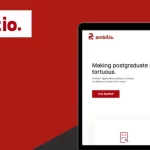Technology in education can aid in achieving sustainability goals. In this informative article, learn how the power of technology can be used to create a better, greener future.
Unveiling Smartboard Technology: A Cornerstone for the Future
Understanding Smartboard Technology
Let’s unwrap this package marked “Smartboard Technology.” So, you’ve seen a whiteboard, right? Well, imagine that, but smarter. A smartboard is an interactive, digital whiteboard that acts as a colossal touchscreen computer. It’s like your smartphone just hit the gym and bulked up—BIG time.
Each touch could mean a line drawn, a webpage opened, or a video played. And it’s not too picky about the touch; it could be a finger, a special pen, or even a rubber chicken if that floats your boat. So, a smartboard is not only a brilliant tool for teaching and presentations. It’s also a wonderful excuse to carry around fun, unconventional props.
The Evolution and Advancement of Smartboard Technology
Now, let’s hop into our metaphorical DeLoreans and zoom back to the late 1980s when the smartboard was nothing more than a glint in its inventor’s eye. These early ancestors of the modern smartboard were clunky beasts. They were often confused about whether a touch was a finger point or an accidental brush with a shirt sleeve.
However, as technology marched on, smartboards became smarter and smarter. Today, they are responsive, nuanced, and can handle multitouch gestures. They’re like obedient pets, faithfully following each command, whether it’s a swipe, a pinch, or a rotation. Talk about evolution!
The Critical Role of Smartboard Technology in Today’s World
So why all the fuss about these oversized tablets? Simply put, smartboard technology is revolutionizing how we teach, learn, create, and collaborate. In classrooms, they turn passive lectures into active learning experiences. In meeting rooms, they bring crispness to presentations and make brainstorming more productive. But wait a minute, isn’t all this awesomeness consuming too much energy?
The Intersection of Sustainability and Smartboard Technology
Integrating Smartboard Technology for a Sustainable Environment
Here’s the crunchy granola bit (I mean that in the best possible way). With current climate concerns, we’re all looking to play our part in creating a sustainable future. Believe it or not, these tech whiz-bang smartboards are doing just that. Their low energy consumption means they’re sipping electricity rather than guzzling it. Plus, with no need for paper or markers, they’re cutting down on waste, too. So, eco-warriors, you can enjoy your interactive whiteboards guilt-free.
Energy Efficiency of Smartboard Technology
Oh, honey! This is where smartboards really flex their green muscles. They use substantially less energy than traditional projectors or computers. Some of the newer models sport energy-saving features like automatic sleep mode and timers. Think of them as the energy-conscious bodybuilders of the technology world.
Reduction of Waste and Environmental Impact through Smartboard Technology
And as for waste? Psh, smartboards laugh in the face of waste! Well, not actually, because, you know, they’re not sentient (yet!). But with smartboards, gone are the days of discarded paper notes and dried-out markers. Everything is digital, baby! You’ll only need to throw away your preconceived notions about whiteboards.
![]()
Enhancing Education through Smartboard Technology
Transforming Learning Environments with Smartboard Technology
Now, let me tell you how smartboards are the equivalent of taking learning environments and sprinkling them with magic education dust. Step into a classroom with a smartboard, and you’ll see kids who are excited to learn. They’re not just staring blankly at a chalkboard; they’re engaged, interacting directly with the lesson material.
Promoting Interactive, Collaborative Learning through Smartboards
Remember group projects in school? With smartboards, they’re less about who controls the marker and more about collaborative problem-solving. Students can simultaneously interact with the smartboard, promoting cooperation and communication. It’s like group work got a much-needed makeover, and honey, it looks good.
Long-term Benefits of Implementing Smartboards in Educational Institutions
Ooh, now this is the juicy stuff—long-term benefits. We’re talking about better student engagement, increased motivation, and improved outcomes. Plus, it’s preparing students for a future where digital literacy will be as crucial as well regular literacy. It turns out that a little tech can go a long way in education.
Smartboard Technology in Business Settings: An Unstoppable Force
Application of Smartboard Technology in Business Operations
To the corporate warriors out there, I’ve got news for you, too. Offices aren’t just for cubicles and water-cooler talk anymore—smartboard technology is transforming them into hubs of creativity and innovation. Imagine stepping into a conference room and controlling a presentation by swiping your hand. Consider how brainstorming could change when your canvas can be as large and interactive as you want it to be. Revolutionary, right?
Cultivating a Modern, Eco-friendly Workspace with Smartboards
And talk about making strides in sustainability! An office with smartboards is one that cuts down on paper, reduces waste, and saves energy. So not only do you look ultra-cool and tech-savvy, but you’re also doing your bit for Mother Earth. That’s truly a win-win.
Realizing Cost Efficiency and Business Sustainability with Smartboard Technology
Then, there’s the matter of the green—both ecological and economical. With smartboards, you can reduce the cost of paper and other office supplies. Plus, their energy efficiency can save on electricity costs. It’s like your budget is giving you a big, thankful high-five for being so considerate.
![]()
Challenges & Potential Solutions Surrounding Smartboard Technology
Analyzing the Obstacles in Implementing Smartboard Technology
But hey, it’s not all rainbows and unicorns. Like any new technology, smartboards come with their own set of challenges. These include a learning curve for those not tech-savvy, initial set-up costs, and adapting to changing technology.
Overcoming the Challenges: Strategies and Solutions
“But wait,” you say. “Aren’t these hurdles pretty high?” The truth is, yes, they might be initially. But the potential rewards make them worth overcoming. With training, even technophobes can master smartboards. And while the initial cost might be more than traditional boards, the long-term savings, benefits, and goodwill of your eco-friendly conscience leave no room for regret.
Future Prospects of Smartboard Technology for a Sustainable World
In the end, remember that adopting smartboard technology isn’t just about being on the cutting edge of tech…it’s about pioneering the path towards sustainable living.
Conclusion: Smartboard Technology as a Key to a Sustainable Future
Summary of Insights and Discussions
So here’s the deal, folks. All under one roof, smartboard technology offers many spectacular benefits – boosting interaction, improving efficiency, reducing waste, and promoting sustainability. I know – it’s like being at an all-you-can-eat buffet of awesome.
Reiterating the Importance of Smartboard Technology for Sustainability
To underscore the point, let’s ask ourselves: can we really afford to ignore such a multifaceted tool when striving for a sustainable future? It’s about time we embraced smartboard technology wholeheartedly, extending its reach from classrooms and conference rooms wherever it can make a difference.
Encouraging a Global Shift towards Smartboard Adoption
Like adopting puppies but with smartboards. Let’s bring these useful beasts into more and more spaces, enriching how we learn and work while reducing our ecological footprint. That’s the progress that would make even Captain Planet proud.’
![]()
Frequently Asked Questions (FAQs)
What is the significance of smartboard technology in building a sustainable future?
> Oh, how about energy efficiency, waste reduction, and oh, did I mention, they’re darn cool to use, too!
How does the use of smartboards contribute to a sustainable environment?
> They’re like eco-friendly superheroes, using less energy, reducing paper and marker waste, and transforming us into efficient, green-ready citizens worldwide.
What challenges are faced during the implementation of smartboard technology, and how can they be addressed?
> With every leap in tech comes its fair share of hurdles. But these can be toppled with patience, training, and a bit of grit. Let the smartboard revolution succeed!

